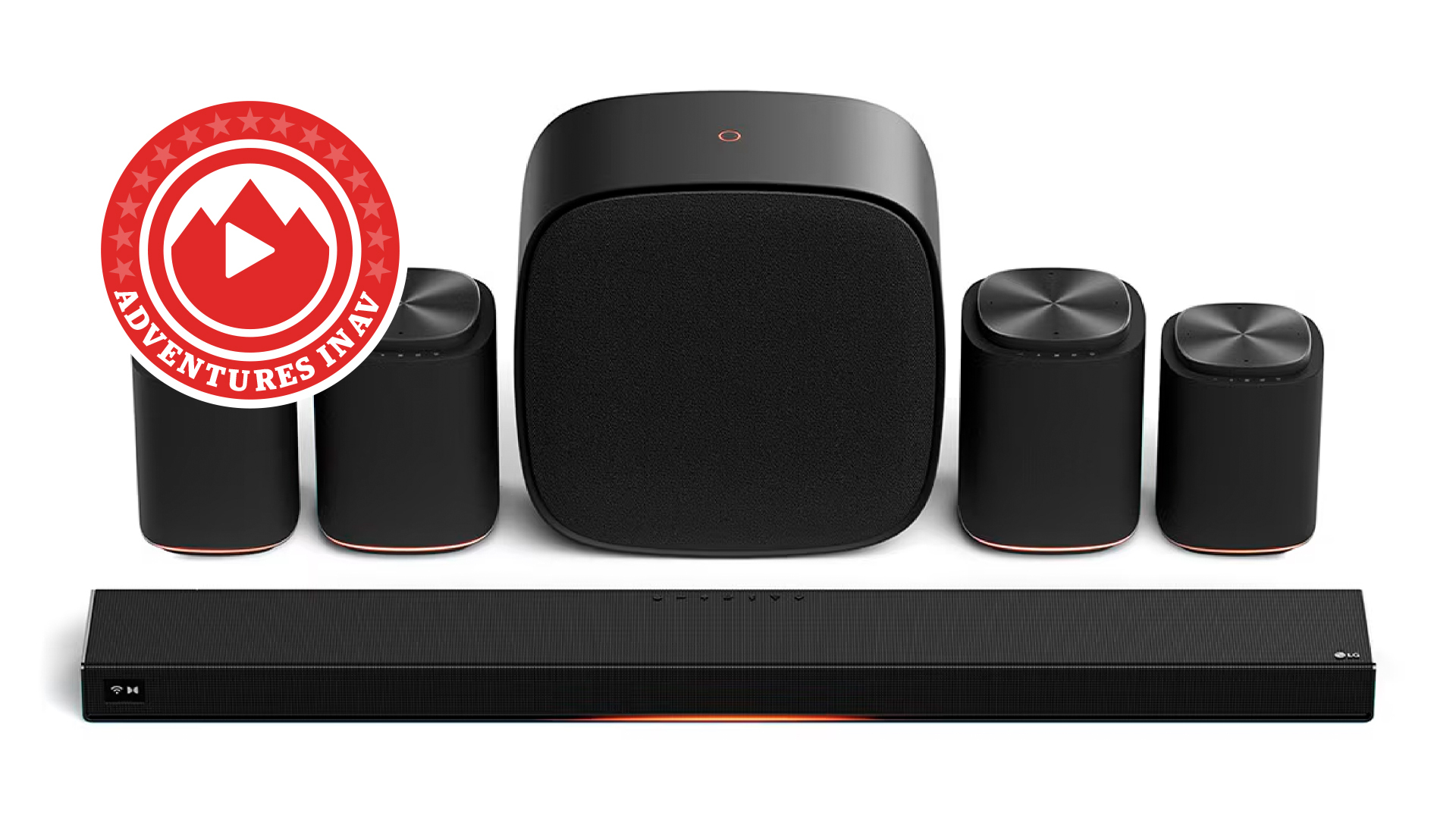What Hi-Fi? Verdict
Great name, great looks, great sound – these Lithuanian three-way floorstanders are wonderful in more ways than one
Pros
- +
Outstanding sound
- +
High efficiency
- +
True three-way
Cons
- -
Solid framed grille
- -
Low impedance
- -
Outrigger feet
Why you can trust What Hi-Fi?
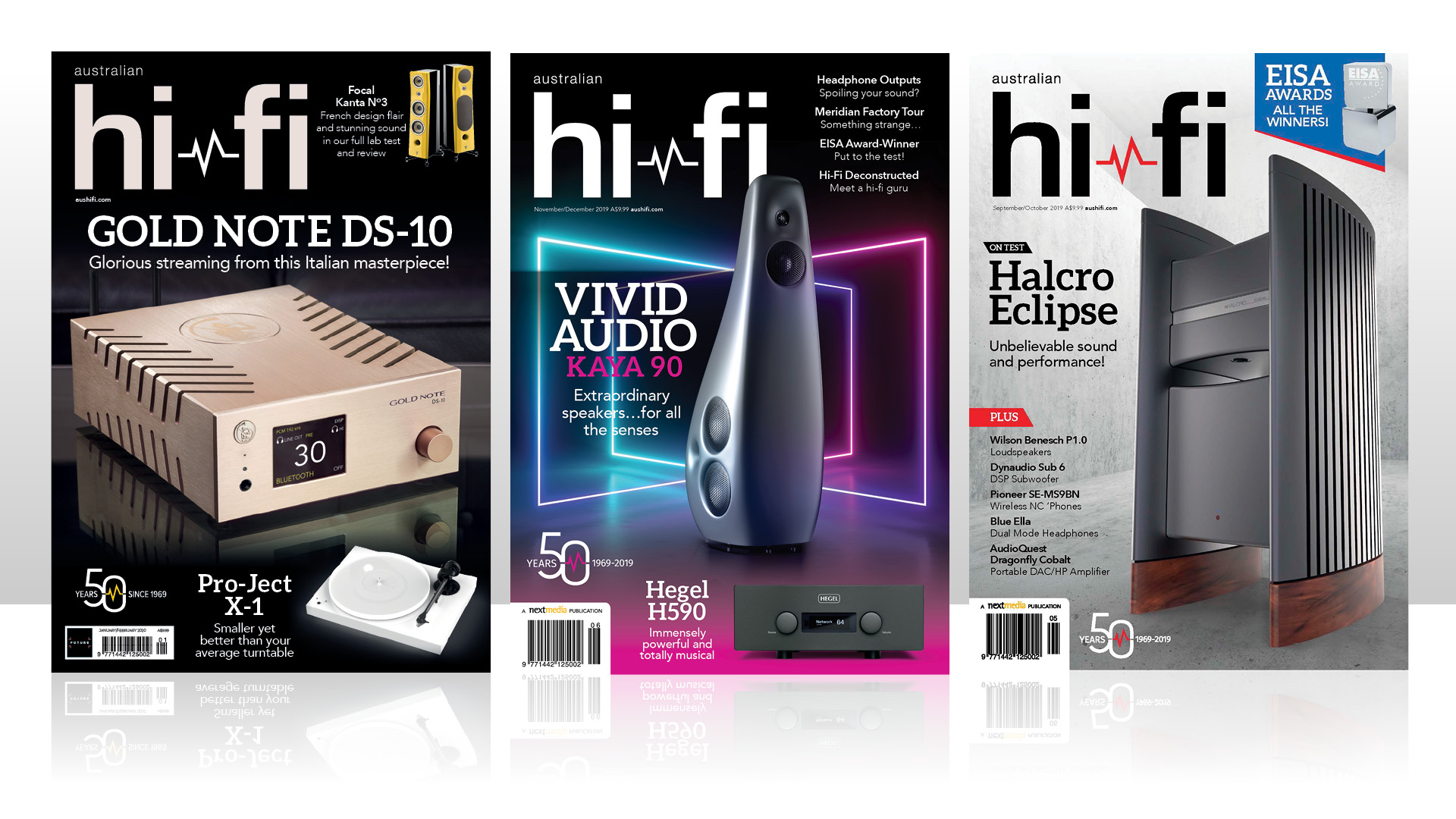
This review was carried out by the team at Australian Hi-Fi magazine, one of What Hi-Fi?’s sister titles from Down Under. Click here for more information about Australian Hi-Fi, including links to buy individual digital editions and details on how best to subscribe.
We love that this Lithuanian loudspeaker manufacturer has named a complete speaker series after a scheming Spanish barber who appears as a character in eighteenth-century French plays as well as famous operas by Mozart (The Marriage of Figaro) and Rossini (The Barber of Seville), though we would have preferred it recognise its own national heritage, not least because Lithuanian is the oldest language in Europe – older than Celtic, German and Greek and certainly far older than French or Italian. Still, we suppose that Audio Solutions’ founder and lead design engineer Gediminas Gaidelis had his reasons.
The model reviewed here, the Figaro M2, sits almost in the middle of an eight-model range that includes a centre channel (Figaro C2). Three models – the S2, M2 and L2 – not only look identical but also sport the same driver count, driver layout, tweeter and cabinet design. Their differences lie in cabinet size and that the smaller Figaro S2 use 152mm drivers for the midrange and bass, whereas the larger Figaro L2 pair a 183mm midrange driver with two 233mm bass drivers.
The original Figaro speakers were released six years ago, and it was only last year, at the 2023 Munich High End Show, that this new ‘M2’ version launched. The Figaro M2 are so different from their predecessors that we’re a bit surprised Audio Solutions didn’t see fit to create a new range. You may also share our surprise when you discover further in this in-depth review the full extent of what is so different about it.
- Latest news on the Sydney Australian Hi-Fi Show, happening this weekend!
- It's not too late to buy Australian Hi-Fi Show tickets online
Design
The Figaro M2 have twin bass drivers, just like the originals, but whereas the earlier model used two repurposed mid/bass drivers to deliver the lower frequencies, the newcomer uses dedicated bass drivers specifically designed to deliver low frequencies, not low and midrange frequencies. The sonic upshot, according to Gaidelis, is that the M2’s bass reproduction is ‘more precise and articulate’. As with the first-gen Figaro, the cone drivers here are not made in Lithuania by Audio Solutions but by SB Acoustics, a division of Malaysian company Sinar Baja Electric which is managed by former Scanspeak/Tymphany employees Ulrik Schmidt and Frank Neilsen.
With the bass driver’s diameter rated as 183mm, our tape measure put their moving diameter at 145mm, their Thiele/Small diameter at 132mm, and the cone diameter at 124mm, for an Sd (effective cone area) of 140cm². Interestingly, the cone is fitted with an enormous dustcap around 77mm in diameter. The cone is made of paper (but a special type, as we will discuss in a moment) and the chassis from diecast alloy.
These drivers operate in parallel, meaning the Figaro M2 has not only a fairly low overall impedance (Audio Solutions says it’s ‘nominally 4 ohms’) but also a very low minimum impedance. (Independent test lab Newport Test Labs measured the minimum impedance as 2.6 ohms). However, using two drivers to deliver bass increases the design’s efficiency, enables a higher power-handling capability (because amplifier power is distributed over two voice coils, rather than just one) and, most importantly, means that more air can be moved, improving the realism of the bass sounds.
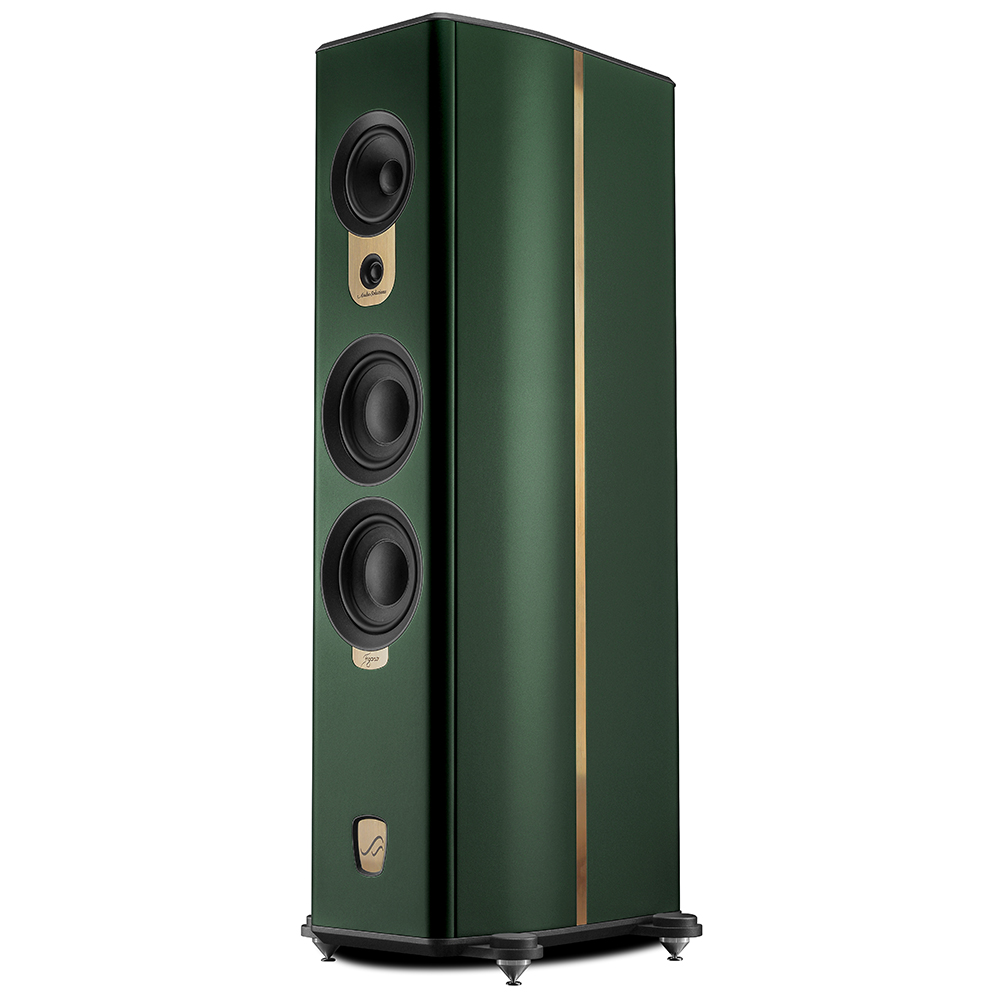
Design: 3-way, ported
Frequency Response: 30-25000Hz
Crossover: 400Hz; 4000Hz
Sensitivity: 91.5 dB @ 2.83V 1m
Nominal Impedance: 4 ohms
Dimensions (hwd): 111cm x 27cm x 47cm
Weight: 45kg
Like their predecessor, the new Figaro M2 are also true three-way designs, by virtue of having a single 152mm cone driver dedicated to midrange frequencies (from around 400Hz up to 4kHz, as these are the crossover points, about which more later). Despite having a rated diameter of 152mm, this driver has a cone diameter of 100mm, 42mm of which is covered by a dustcap. The total moving diameter (cone plus roll surround) is 118mm.
The latest hi-fi, home cinema and tech news, reviews, buying advice and deals, direct to your inbox.
Indeed, a dedicated midrange driver is essential if you wish to avoid phase modulation distortion across the mid-band. This distortion occurs whenever a single speaker cone is called upon to reproduce both low and high frequencies simultaneously, and so happens in any design where the bass driver(s) are also required to deliver the midrange – in other words, in any two-way loudspeaker.
Why? Because if a driver is required to produce a single low-frequency sound (at, let’s say, 55Hz), its cone will move backwards and forwards fifty-five times per second, and your ear will hear the resulting movement of air caused by this movement as the musical note ‘A1’. However, if that same driver also must produce a midrange note such as, say, ‘middle-C’, which has a frequency of 261.63Hz, it would also have to move backwards and forwards 261.63 times per second at the very same time it is also moving backwards and forwards 55 times per second! Consequently, the frequency of what should be ‘middle-C’ will not always be precisely 261.63Hz; it will be shifted higher or lower depending on the direction the cone is moving to produce the 55Hz signal. Because of phase modulation distortion, it’s preferable that bass drivers produce only low-frequency frequencies, and a completely separate loudspeaker to produce midrange ones. (For a more detailed explanation and real-life loudspeaker measurements, read the article ‘Doppler distortion in loudspeakers – Real or Imaginary?’)
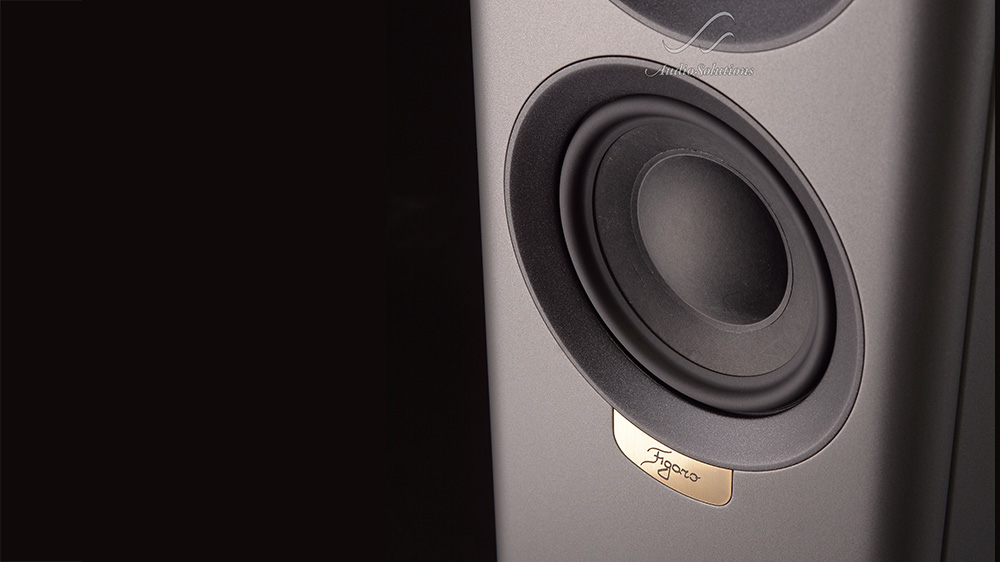
There is yet another advantage to using a dedicated midrange driver: you don’t experience the differences in tone, phase and spatial position when the audio signal switches from one driver to another, which is inevitable in any two-way system, particularly since the human ear is critically sensitive in this mid-band region as a direct result of evolution. Gaidelis explains it this way: ‘In nature, the sounds of life-threatening events lie more or less in 1,000–2,000Hz diapason, so naturally, we are most sensitive to that so we could stay alert. The downside of this phenomenon in this rather safe modern world is that we can hear and pinpoint the slightest imperfections in reproduced sound at those frequencies, yet… most manufacturers calculate crossover points in exactly this area. The only way to fight this is to utilise crossover points away from this region, and it is for this reason we created an Extended Band Midrange driver whose crossover points of 400Hz and 4,000Hz are one octave away from the sensitive band. This solution not only helps with crossover distortion perception but means also that the listener gets uniform, unchopped sound coming from one driver with virtually zero phase shift. Homogenous sound in our opinion is one of the biggest goals in the audio industry.’
So, back to these paper cones. The Figaro M2’s midrange and bass driver cones are made of a paper pulp that is ‘extra rigid’, hence the designation ‘ER paper cones’. Gaidelis chose them for their ability to deliver the uniform piston motion of a cone made from a hard material (metal, ceramic etc), without suffering from the drawbacks of such materials such as early break-up modes and ringing. ‘Having the positive properties of paper and introducing hardening materials like sturdy fibres and hard pulp gives us a unique cone that acts as a piston, but at the same time does not have ringing or early cone break-up points,’ he says. ‘ER cones allowed us to introduce new piston-like bass drivers and of course our extended band midrange.’
One drawback of the ER cone, however, is that its surface seems to be imperfect to the naked eye, due to the visible presence of hard pulp flakes and fibres, as well as the colour variances between different parts of the cone that make it look as though its surface has suffered water damage. These seeming imperfections are, says Gaidelis, ‘natural to rigid ER paper cones as a result of the hard pulp being less processed and is the same for all drivers using hard pulp, including those from SEAS, SB Acoustics, Scan-Speak and Vifa’.
Made by Tymphany, the Figaro M2’s tweeter has a soft fabric dome 19mm in diameter, and is fitted to the bottom of a shallow plastic horn to reduce the distortion that occurs at higher volume levels when the mass of air in front of the dome’s peak becomes sufficient enough to prevent it from moving as fast as the dome’s sides. This problem is solved in various ways by different manufacturers. A common one is to attach the dome’s peak to a ‘bridge’ spanning the tweeter, another is to simply damp the peak using a similar bridge method. Gaidelis uses a ‘mini-horn’ solution, which he says achieves the same result at a lower cost, while an added advantage is that the horn-loading increases the tweeter’s efficiency so that it doesn’t have to work as hard to produce the same sound pressure levels as it would without it.
Unlike many tweeters, this one does not have any ferrofluid in the voice coil gap as, according to Gaidelis, it ‘slows the tweeter down’. The engineer says he also put the crossover frequency between the midrange driver and the tweeter at 4kHz, which is rather higher than usual, to ‘keep all crossover components outside the range where our ears are most sensitive.’
The crossover network itself has also been improved over the one in the original Figaro, with several of the components having been ‘improved in quality to gain a bit more precision in sound, mostly in tweeter (sic) and midrange’ and small corrections having been made in the values of those components in order to ‘further improve signal separation into three ways’.
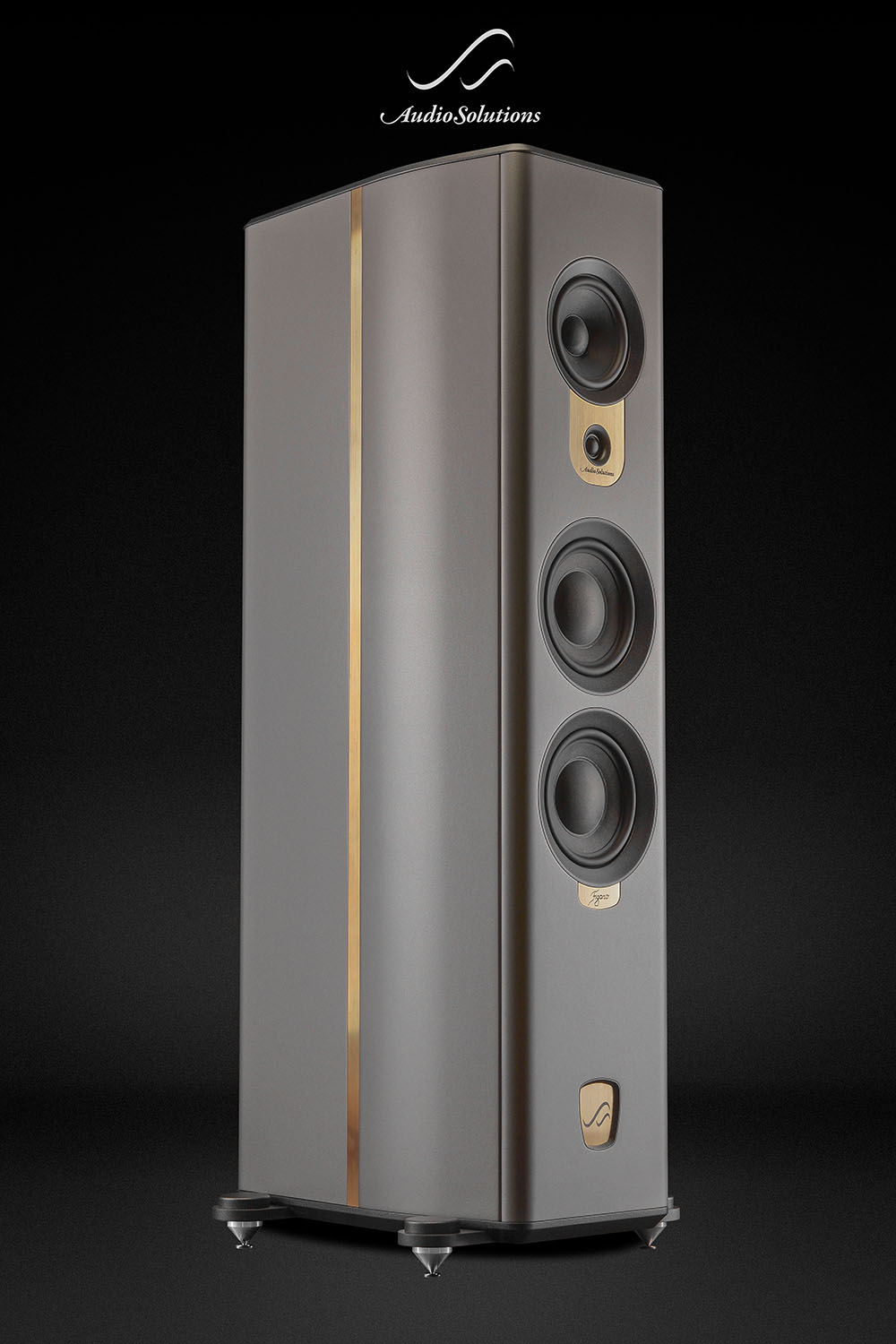
The most significant of the changes brought by the Figaro M2, according to Gaidelis, is the cabinet. It’s completely different, using the same technology he developed for the Audio Solutions Virtuoso, which he calls a ‘box-in-a-box system’ and says is superior to the M1’s self-locking cabinet system. Essentially, the new cabinet comprises two ‘boxes’ (cabinets), one inside the other. Of this design, Gaidelis says: ‘The weakest points of a traditional speaker cabinet are the corner joints since they behave more like hinges, rather than tight joints in a natural vibrating environment. The ‘box in a box’ approach resolves this issue by combining two cabinets, arranged in an offset pattern. The internal cabinet is fully sealed and outfitted with heavy internal bracing and dampening. It is then covered with an outer box, which is glued tightly to the internal cabinet. This technique allows the cabinet to achieve ten times the stiffness of a single-layer enclosure. The sonic gains from the stiffer cabinet are enormous – the sound is neutral and more authentic and, as a part of this arrangement, the cabinet also becomes heavier, which directly helps with vibrations control.’
Audio Solutions’ website refers to it as a ‘Cabinet-in-a-Cabinet’ enclosure design that comprises ‘…two separate enclosures – an inner cabinet and an outer cabinet bonded together by a thin layer of polyurethane. The inner cabinet is manufactured of a lightweight yet rigid material that controls primary vibrations by absorbing acoustical power coming from the drivers. Then a thin layer of viscous polyurethane situated in between the inner and outer cabinets acts as a dampening layer which converts vibrations born in the inner cabinet to heat. The residue of vibrations is then dampened by the outer cabinet which is manufactured of a much heavier and less dense material that acts as a mass damper.’
Build
Externally, the cabinet is available ex-stock with three different finishes – Standard, Premium and Bespoke. ‘Standard’ offers the cabinet’s front section in one of four glossy paint colours, but the rear section is simply painted black, as is the script (‘Audio Solutions’ and ‘Figaro’) on the front panel; ‘Premium’ sees the entire cabinet painted in one of the available glossy colours, with a black stripe down each side; ‘Bespoke’ is the newest – and priciest – option and offers satin paint colour finishes complemented by brass side stripes and lettering.
That said, should you prefer a unique, ‘non-stock’ finish, Audio Solutions offers what it calls its ‘Exclusive Personalisation Program’, where you can tailor the colours and/or style to your taste. ‘We can do small changes (or) we can make completely tailor-made speakers,’ says the company. ‘Our team works in conjunction with architects and designers and is ready to make a one-of-one product for your living room.’
This Figaro sequel also has an outrigger arrangement for the feet to increase the stability of the rather tall (1108mm) cabinet. The two outriggers and four conical feet come in a separate plywood box – indeed, they’re rather better packed than the speakers themselves, which come in relatively flimsy cardboard cartons! The outriggers are made of 12mm-thick wood, rounded at either end and painted black, with the rear one longer than the front one – 335mm vs 393mm. Their construction seems relatively flimsy, despite the addition of wooden ‘pucks’ atop each outrigger above the cones, so we wouldn’t recommend ‘walking’ these very heavy (45kg!) loudspeakers on them during the positioning process.
Once the speakers are in place, then, the outriggers need to be slotted into pre-machined troughs in the base of each cabinet, after which each one is fixed in place using three Philips head screws. On our review sample, the troughs were not quite as deep as the wood is thick, so there was a little ‘lip’ where each outrigger stood proud of the base. We would prefer the surfaces to finish flush, but since this is all underneath the speaker and therefore invisible, it’s hardly an issue. Gaidelis says the new arrangement is ‘more stylish, practical and a lot more stable’.
Another change: the grille type. Magnetic grilles replace the old ‘double grille’ system, but we have to say the design is rather curious. Rather than being a frame, like most speaker grilles, this one is made from a solid piece of 6mm-thick timber that has holes only where the drivers are located. The holes, at that, are rather small – 145mm in diameter for the single midrange and two bass drivers (mirroring their moving diameter), and only 60mm in diameter for the tweeter. Because of this, we suspected that the Figaro M2’s off-axis performance might be affected by the grilles, particularly in the high frequencies.
As you’ve undoubtedly already gathered, the bass reflex port – actually, ports; there are two of them – are located at the cabinet’s rear. Each is 50mm in diameter, 140mm long, made entirely of smooth black plastic and flared at only the exit (not at the entrance). The ports sit immediately above the speaker terminals, which are the excellent WBT NextGen design, with plastic threads and a separate collar that enables the knurled nuts to be easily tightened down onto bare wire, collars, spades, or whatever you use to terminate your speaker cables. The terminals themselves are fixed to a brass plate.
Sound
Given our curiosity over the grilles’ odd design, we decided to trial it before starting our listening sessions in earnest. Although, admittedly, that decision may have been affected by a preconceived assumption, we found we preferred the Figaro M2’s sound without their grilles fitted – though only the very highest frequencies sounded different to us, and only by a small amount. As it happened, we also preferred the look of the speakers without the grilles, so if we owned a pair, the grilles would likely stay packed away in their little boxes.
Whilst evaluating the off-axis issue, we also discovered we preferred the cabinets slightly angled so that the tweeters aimed directly at the listening position, though again, the differences between that and them aiming straight up the listening room were small – more negligible than the grille on/off differences – so this would be a personal call. The great news is that the Figaro M2’s bass performance is excellent no matter whether they’re positioned close to a rear wall or away from one, so much so that, despite the presence of the rear-firing ports, we were happy with the bass delivery even when the speaker cabinets’ bases were flush against the skirting board – a trait that will no doubt ensure these speakers have a very high partner acceptance factor!
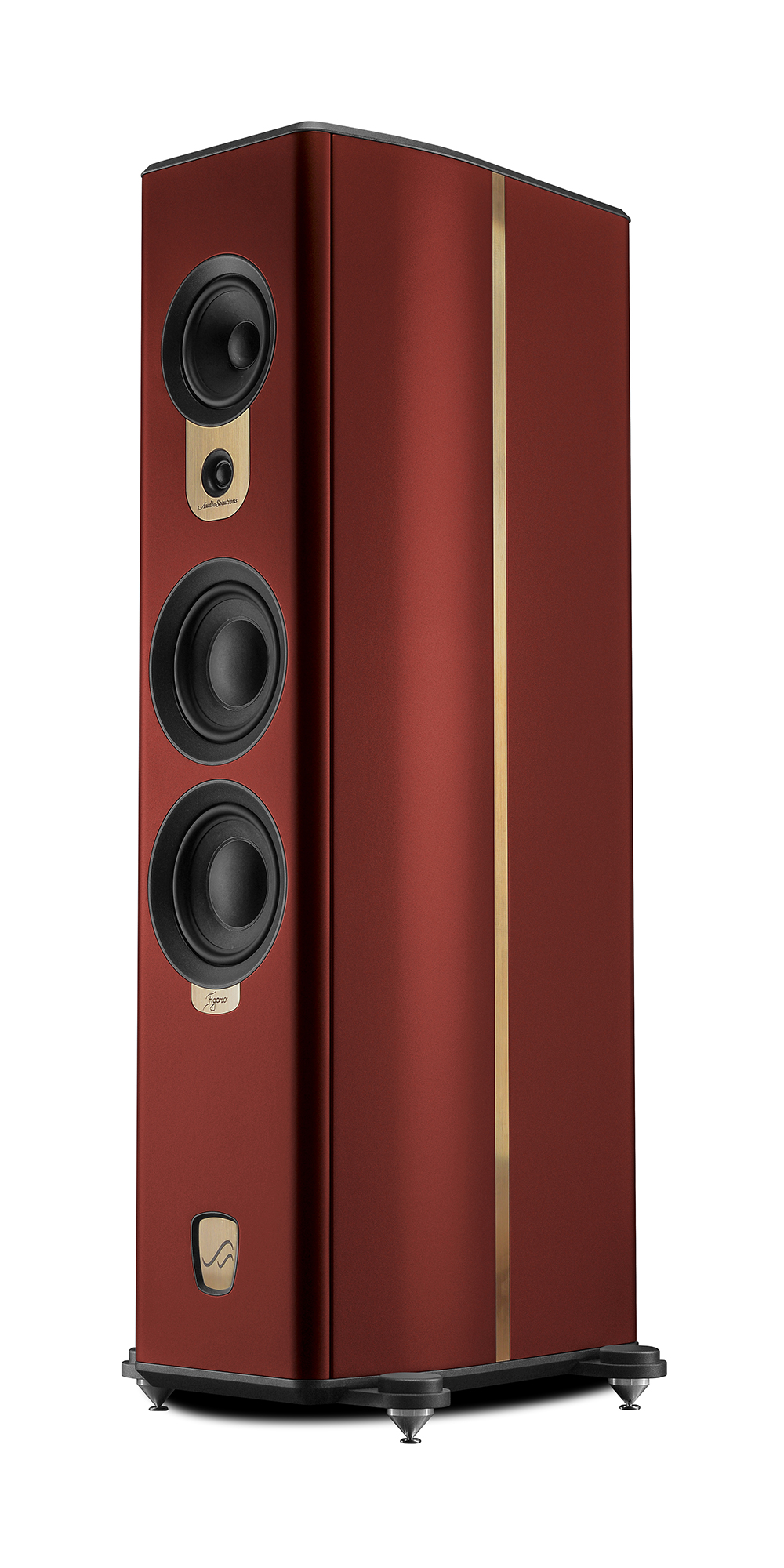
We will elaborate further by adding that bass not only sounds great but is also very extended, easily digging deeply into the bottom-most musical octave where only the lowest-pitched instruments can reach, such as the keyboard instruments, the double bass and the kick drum. Listening to one of our favourite albums from across the ditch, Lorde’s cleverly titled debut ‘Pure Heroine’ from 2013, which is replete with great-sounding deep bass lines, was a revelation; we don’t think we’ve ever heard it sound so good. Right from the opening track, Tennis Court, we could not only hear the deep bass but feel it as well (admittedly we had the volume up pretty high!). This track also features spectacularly good percussion sounds, all of which were reproduced crisply and precisely by the Figaro M2. It also has several stereophonic shenanigans going on, where sounds pan and alternate between channels, and these too were also splendidly delivered.
The second track, 400 Lux, also demonstrated the speakers’ ability to deliver the very deepest bass notes, and not just when the volume levels were set to ‘stun’ (we had backed off the volume out of consideration for our neighbours). But both these tracks are really just warm-ups for the third track, Royales, which is an absolutely perfect piece of song-craft; so perfect that the list of music critics who called it the best song of its release year is a lot longer than your arm. And of course, it has since been covered by the likes of Bruce Springsteen and others, has featured in advertisements (Samsung) and was the first song Lorde permitted for use in a movie (Hustlers). Listen to the lyrics and you will be amazed to learn that Lorde reportedly wrote it in just under 30 minutes! The track’s sparse (mostly electronic) instrumentation allowed us to admire not only Lorde’s mezzo-soprano vocals but also the Figaro M2’s talents to deliver them with such purity and accuracy, despite the mezzo vocal range spanning F#3 (185Hz) to F#5 (739Hz) and therefore meaning that both the midrange and the bass drivers were involved in the rendition.
We were also able to admire the tonal consistency of the left and right speakers thanks to backing vocals being allocated individually to each channel, as well as their imaging courtesy of Lorde’s vocal being exactly stage-centred. You’ll also hear this soundstaging prowess on the a capella introduction to Team, the third track on the album. Ultimately, we’d rate the Audio Solutions speakers’ stereo imaging abilities as second to none.
Switching from fairly sparse sonics to rock ‘n’ roll (albeit sticking with our ‘across the ditch’ theme), we fired up the fabulous ‘True Colours’ album by Split Enz (Kiwi musos seem to have a trick of inventing clever titles!). Anyone who is familiar with the record will sympathise with us skipping opener Shark Attack in favour of kicking off with the far superior I Got You. This track proved instantly that the Figaro M2 deliver the sounds of real instruments just as well as synthesised ones, and that they excel in delivering the fuller sound of a straight-ahead rock band. All the drum and cymbal sounds in Malcolm Green’s kit were delivered wonderfully, as were the inventive bass lines from Nigel Griggs’ bass. The distinctive vocals of the two Finns were also well reproduced, but among the standouts was how the Figaro M2 revealed the unique sound of Eddie Raynor’s CP-70 electric piano.
The electric piano inspired us to spin an album with a real one, so up next was Jean-Efflam Bavouzet’s release from a year or two ago, Haydn Piano Sonatas, Vol 11, on Chandos (CHAN20193). The first work on this album reminded us of our own youthful rendition of it when we were learning to play the piano. With the benefit of age, hindsight and the obvious perfection of Jean-Efflam’s performance, we can see why our teacher winced as we played our rendition of Haydn’s Piano Sonata No. 1 in G major! We digress…
The Figaro M2 had no difficulty reproducing the majestic sound of Bavouzet’s grand with superb realism, revealing the sonorities of the piano and his finger-touches perfectly. And if a loudspeaker can do these things, it can do anything! From there it was just a short step to our series of auditions using a variety of orchestral works, and who better to start with than Gustav Mahler? Particularly since a superb new recording of his first symphony performed by the Czech Symphony Orchestra, under the baton of Semyon Bychkov, is now available. It’s a lovely performance, one where Bychkov goes back to simplicity, eschewing the curious interpretations and instrumentations that have adversely affected so many other performances (over-abundances of double-basses, for one), and the Figaro M2 delivered the orchestra excellently. They reprised their performance, too, when we followed up with Mahler’s Symphony No. 3 (Bernstein, with the New York Philharmonic) and No. 5 (Bernstein again, but with the Vienna Philharmonic). And no, you can never listen to too much Mahler, so we also listened to his best symphony, No. 9, as played by the Berlin Philharmonic Orchestra under the great Herbert von Karajan! Each time, the Audio Solutions Figaro M2 came up trumps!
Verdict
Gediminas Gaidelis’ surname is derived from the Lithuanian word ‘gaidys’ (or, in English, ‘goat’), and because goats are seen as a symbol of peace and serenity the word has, over time, also come to refer to someone of a peaceful and easygoing nature. So it’s rather interesting that the same could be said of the sonic character of Gaidelis’ Figaro M2 loudspeakers: they too have a peaceful and easygoing nature. They always sound elegantly smooth and superbly natural, and deliver music in a relaxed yet utterly involving manner irrespective of the music genre played. These are truly wonderful-sounding – and, particularly in their Bespoke incarnation, wonderful-looking! – loudspeakers. They have our very highest recommendation.
Readers interested in a full technical appraisal of the performance of the Audio Solutions Figaro M2 speakers should seek out the LABORATORY TEST REPORT that will be published in the May/June issue #536 of Australian Hi-Fi in print & digital editions, available from the end of May 2024.
- Check out all our Australian reviews from Australian Hi-Fi & Sound+Image magazines
- Latest news on the April 2024 Australian Hi-fi Show
Australian Hi-Fi is one of What Hi-Fi?’s sister titles from Down Under and Australia’s longest-running and most successful hi-fi magazines, having been in continuous publication since 1969. Now edited by What Hi-Fi?'s Becky Roberts, every issue is packed with authoritative reviews of hi-fi equipment ranging from portables to state-of-the-art audiophile systems (and everything in between), information on new product launches, and ‘how-to’ articles to help you get the best quality sound for your home.
Click here for more information about Australian Hi-Fi, including links to buy individual digital editions and details on how best to subscribe.


